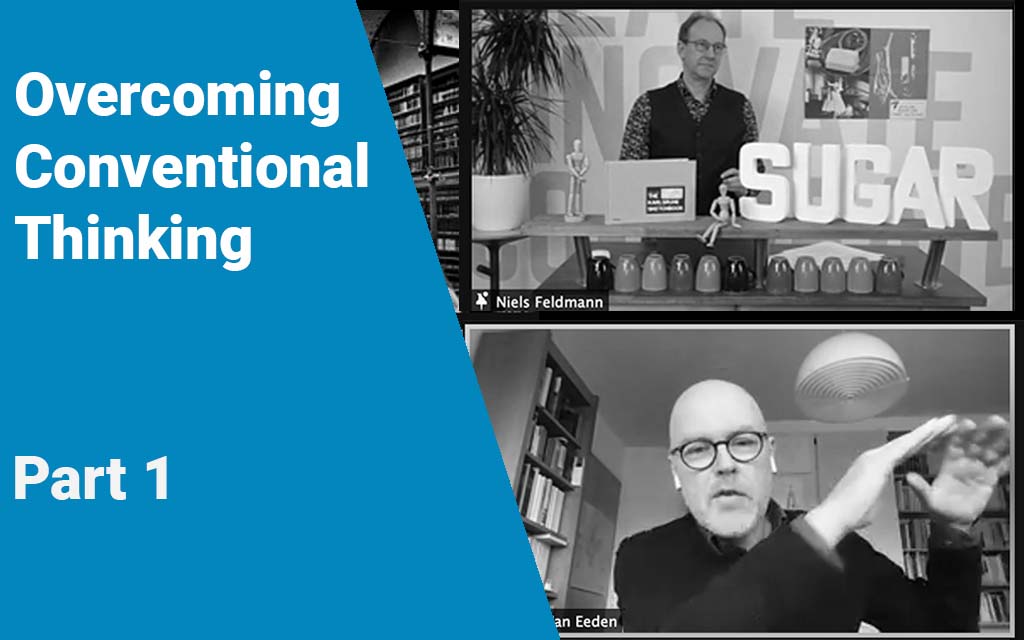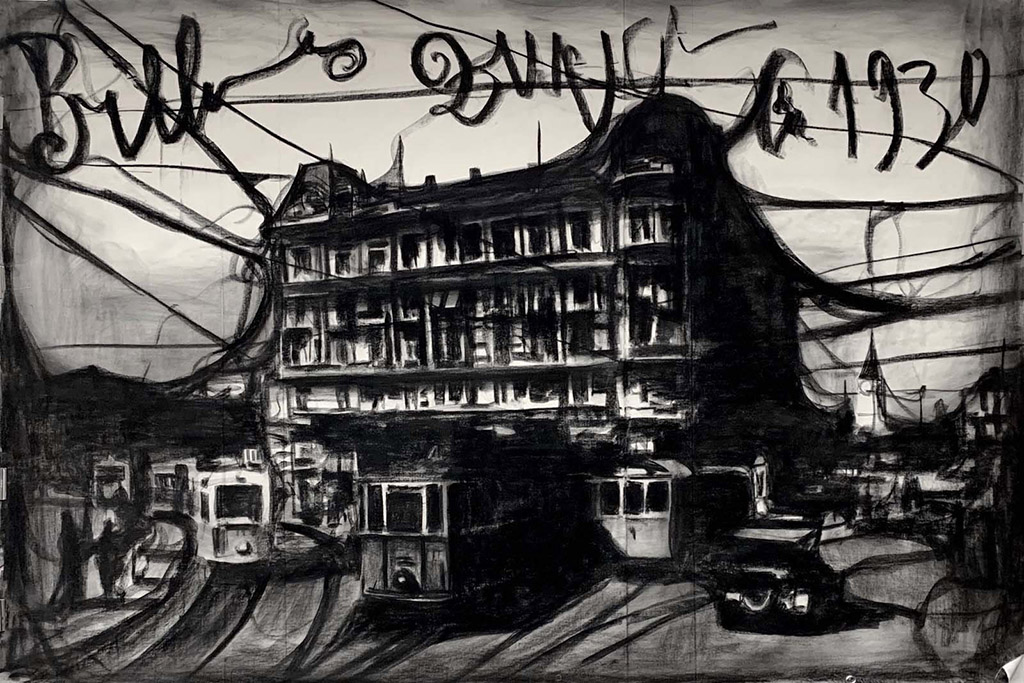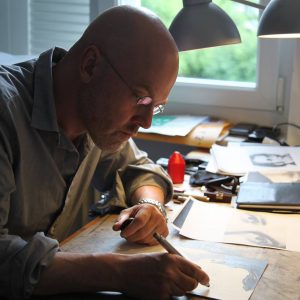A Conversation with Prof. Marcel van Eeden
Have you ever wondered how something new can emerge from a topic that has already been taken up a million times – like a creative picture of the Eiffel Tower? If yes, you’ve experimented with overcoming conventional thinking and you’ve probably found it to be a difficult task.
On February 18, 2021, we invited a professional in terms of looking at the world from an unconventional perspective to the SUGAR Bar – a contemporary artist. Marcel van Eeden is an internationally renowned artist and a professor at the State Academy of Fine Arts Karlsruhe.
In part 1 of this series he introduces us to the way he creates problem definitions which he then responds to by creating artworks (minutes 0:00 – 06:19 in the video)
Interviewers: Christine Thong (Swinburne University of Technology, Australia), Renee Wever (Linköping University, Sweden) and Niels Feldmann (KIT, Germany).
Revised and approved version of the conversation. Edited by Tuhina Tomar and Niels Feldmann.
Getting to know Marcel van Eeden
Christine Thong (CT): Welcome Marcel. We are a group of practitioners and researchers from the field of human-centered design. So, we are very curious about humans, you included. We hope you could give us a brief overview of who you are and what you do ….
Marcel van Eeden (MvE): Yes, I’m Marcel van Eeden. I’m an artist and a professor at the art academy in Karlsruhe and I mainly make drawings. That’s what I am doing for over 30 years already. Shortly said, I’m making drawings after images, photos, ads that were made before I was born. These are the boundaries I set for myself and within these boundaries I try to be as creative as possible. And it’s possible to make a lot of different things, very different work, within these limitations. Strangely enough.
Staking out the Soccer Field
Renee Wever (RW): Marcel, you already mentioned that you have some self-imposed restrictions. When I read up on your work, I saw that, for like five or six years, you basically worked on one size of paper every day, with the same kind of topics. How does that influence your creative process? Is it helping to have these boundaries? Or, at a certain point, you let them go? So, how does that work in your creative process?
MvE: Some boundaries go but not the main topic, not the main idea of having these photographs from before I was born. But, I was constantly thinking if it’s good to have boundaries or to have some limitations for yourself. And I think it’s really important to have limitations. I think it’s similar in design, you need a problem definition before you can start working. If you have complete freedom, if you don’t have a soccer field where you can play and be creative, then you cannot make anything. If you have complete freedom – also with designing – I think, if there’s no question, if there’s no problem, if there’s not some given structure where you should be creative, then there is no reason to make something. I mean, that’s too much freedom.
Infinite Possibilities within Boundaries
RW: The restrictions that you have imposed, do you keep them because you feel that you need these long years to get to some significant depth or just because they’re still very giving to you and very generative, and that they just keep stimulating you.
MvE: The strange thing is that although the boundaries are there they are also very broad. It’s the whole period before I was born, that’s a long time. Even if you limit it to the number of pictures that we’ve taken since the invention of photography, there is still a lot of material there. But, of course, before that, there are also some millions of years.
And yes, it’s still very stimulating. I think, it’s because I had the idea to make kind of an encyclopedia of everything from before I was born. I would need a lot of time to cover all the stuff. There are so many pictures from the time before I was born and if I wanted to draw all of them, I would not have the time to do that. Hence, it’s still of a big project.
So, every drawing you make after the first drawing, every drawing you add to the project is having more depth. And even more because you are making a pile of them and the piles are getting higher and higher, and getting more meaning and it’s getting more interesting for me. And it’s also interesting that the boundaries are there and it’s still possible to invent new variations on the same subject.
Recap & Take-Away
Marcel established an approach to create problem definitions. The resulting artworks are his answers to these problems:
- In his Associative Theory of Creativity, S.A. Mednick (1962) defines creative thinking as „forming of associative elements into new combinations… The more mutually remote the elements of the new combination, the more creative the solution.“ (p.221)
- Creating art from an associative theory point of view: Marcel has given himself simple but clear rules: The basis of every artwork needs to be a picture from before he was born. Hence, he needs to bring every topic he wants to address into association with these rules. Most likely, the topics and rules are unrelated – or in Mednick’s words are „mutually remote“.
- [Take-Away] Create a pointed but unusual problem definition: Accordingly, Marcel creates a pointed, but not obvious problem definition that has the potential for a highly creative outcome, e.g. „How to deal with topic x by using only input from the time before 1965?“
Marcel van Eeden (*1965, Den Haag/NL)
Lives and works in Den Haag/NL, Karlsruhe/DE, Zürich/CH
Professor at the State Academy of Fine Arts Karlsruhe since 2014
Rector of the State Academy of Fine Arts Karlsruhe from October 2021
Web: https://www.marcelvaneeden.nl/
Galleries:
Sprueth Magers, Berlin | London | Los Angeles
Galerie Barbara Seiler, Zurich
In Situ/Fabienne Leclerc, Paris



